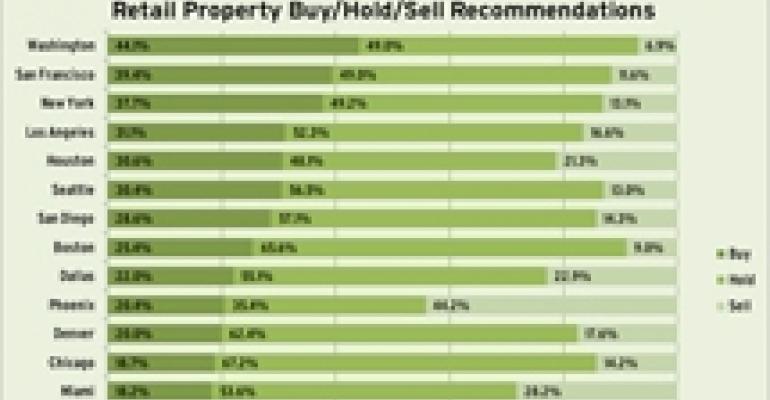Investors will increase acquisitions of well-leased, cash-producing class-A retail assets in gateway markets in 2011, according to the Emerging Trends in Real Estate 2011 report from the Urban Land Institute (ULI) and PricewaterhouseCoopers LLP (PwC). But buyers will have to settle for lower returns than they have become accustomed to. For next year, the ULI forecasts average returns of 7.5 percent for institutional quality private real estate equity and average returns of 8.2 percent for the REITs on investments in all commercial real estate classes.

While financing availability will continue to grow in 2011 and sellers will become more willing to put assets on the market, both lenders and investors remain troubled by macro-economic trends, the report warns. The barely budging unemployment rate, in particular, is a major source of concern, as Americans have less money available for housing, everyday needs and discretionary spending. With no clear avenues for future employment growth emerging, investors will continue to see retail properties as a more risky bet than apartment buildings or office towers. As a result, there will be little capital available for under-performing centers in suburban markets or for new retail projects.
In fact, ULI and PWC expect that as more and more Americans will move from outlying areas closer to city centers, many underperforming centers in secondary and tertiary markets might be converted to other uses. If troubled owners and lenders manage to find buyers for those kinds of assets, they will have to accept the cents on the dollar pricing that was common in the days of the Resolution Trust Corp.

Retail properties with healthy cash flows in gateway markets, however, will be a preferred asset class among investors. ULI lists Washington, D.C. and New York as markets where selling will make the most sense. In particular, it recommends investment in shopping centers in urban infill areas with major supermarket chains as anchors, and in fortress malls. These assets have proven that they can withstand a dip in consumer spending.
On the other hand, conditions might not yet be favorable enough to sell properties in cities like San Francisco, Los Angeles, Boston, Houston and San Diego. Owners there would do well to hold onto their centers for the time being.

Overall, ULI and PwC caution that while the current environment is favorable for making real estate investments, it requires buyers who have the patience and experience to hold onto their properties for the long-term. Though the commercial real estate industry has gotten through the worst of the downturn, the era of flipping is over for good. The industry is now in an era of reduced credit availability and lower returns.
The Emerging Trends in Real Estate 2011 report was compiled using surveys and interviews completed by more than 875 industry insiders, including investors, fund managers, developers, owners, lenders, brokers and consultants.

